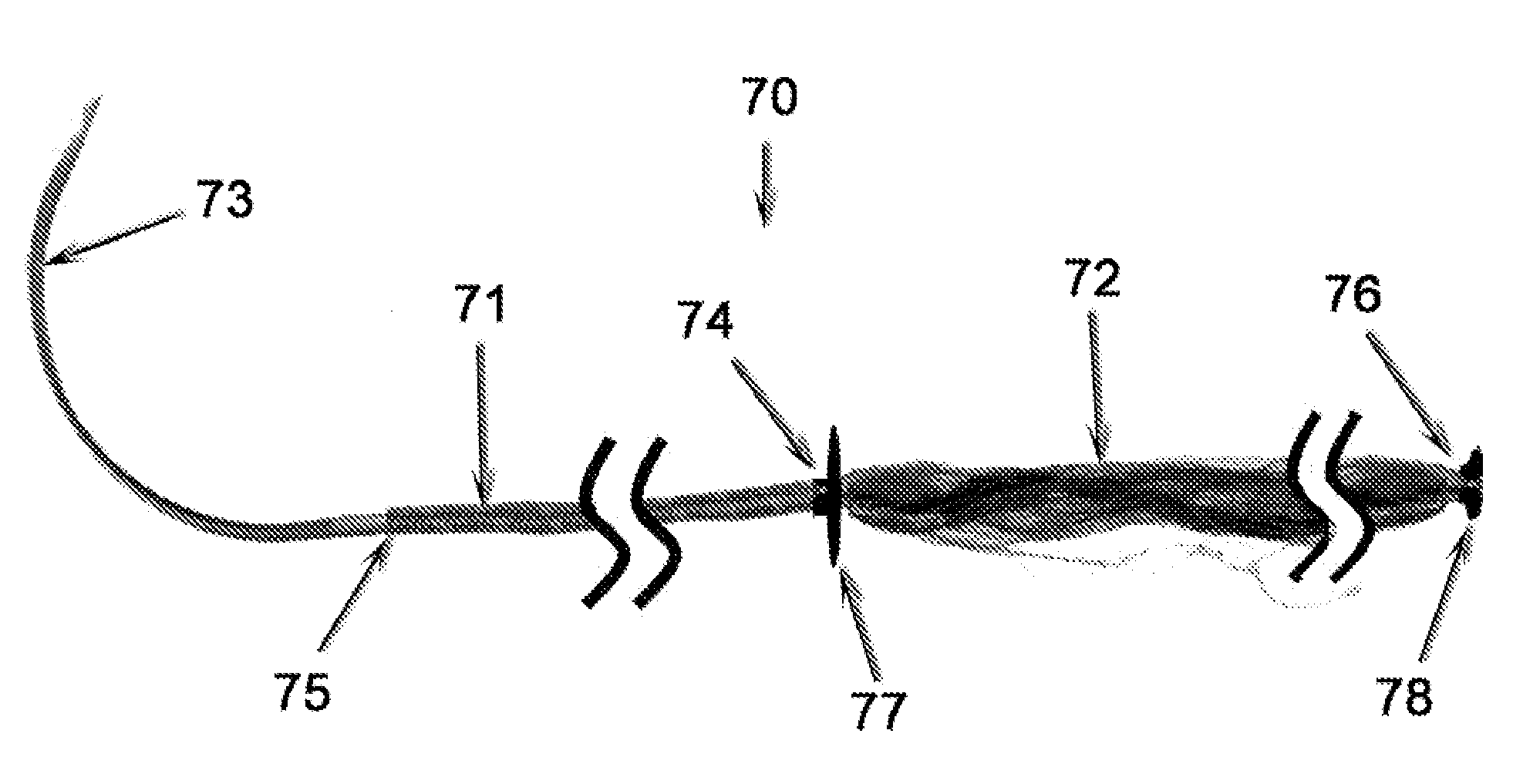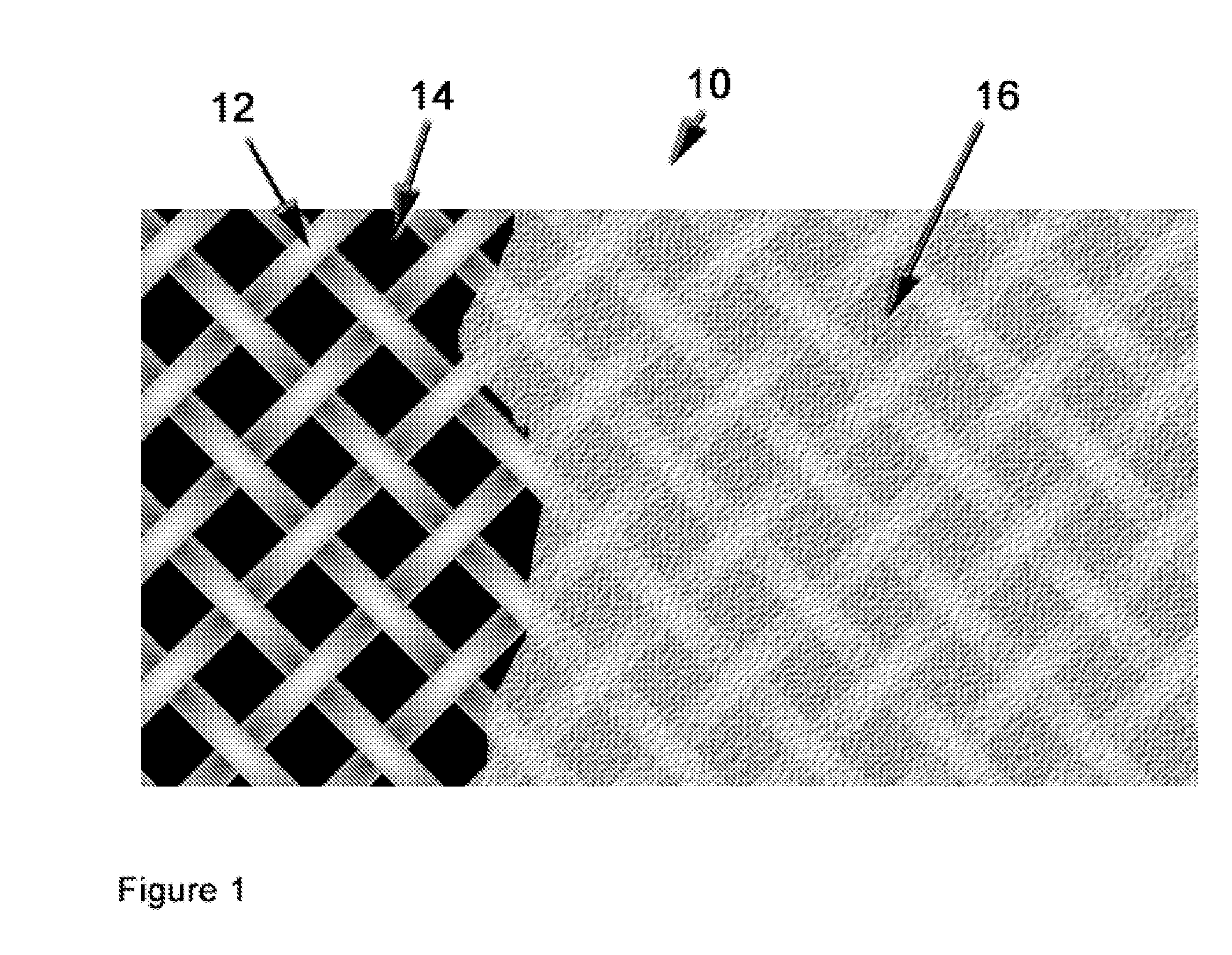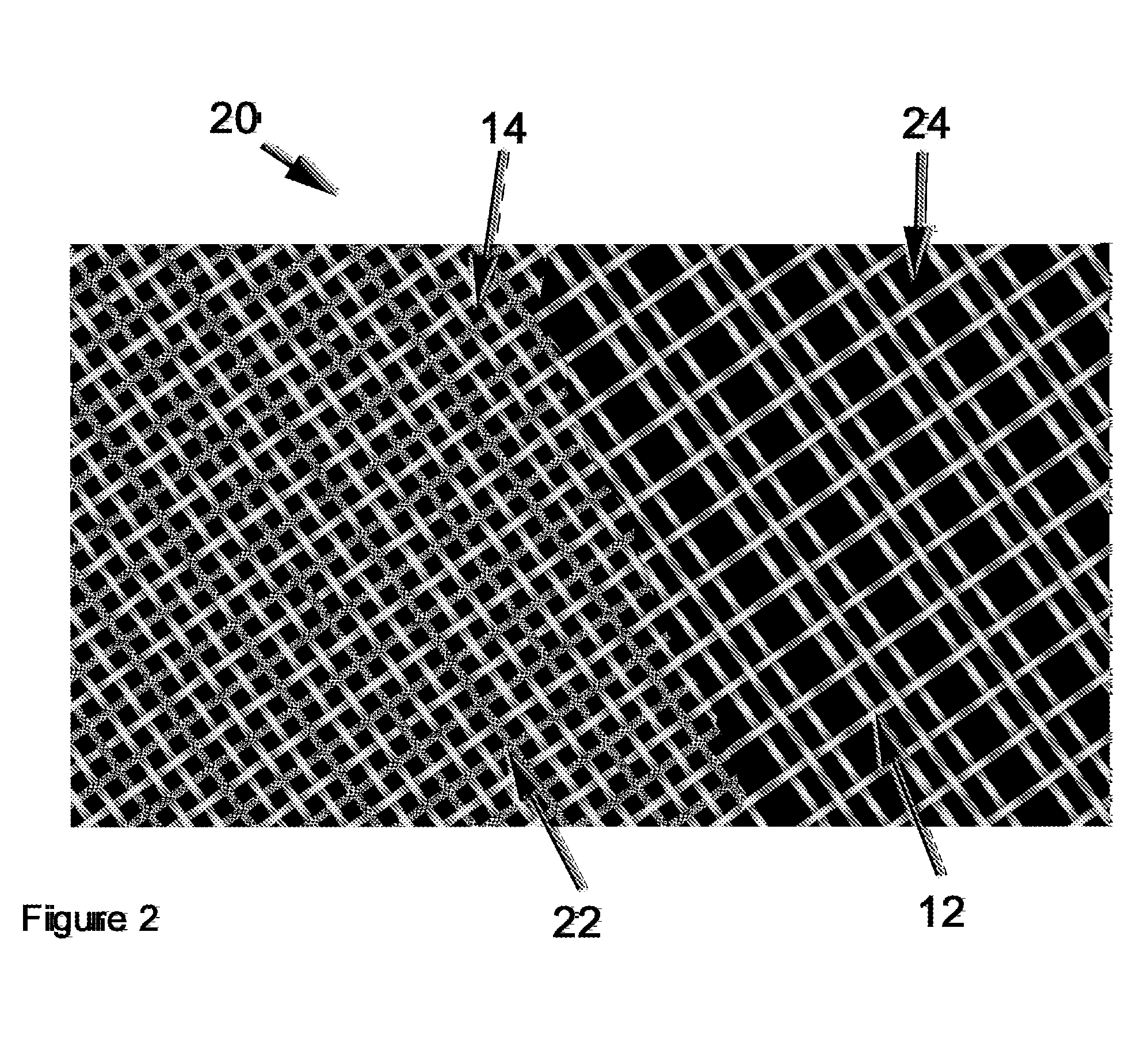Surgical sutures incorporated with stem cells or other bioactive materials
a technology of stem cells and bioactive materials, applied in the direction of surgical staples, prostheses, transportation and packaging, etc., can solve the problems of fluids, affecting the treatment effect of endogenous tissues, and affecting the patient's recovery, so as to reduce the concentration of stem cells and reduce the migration of cells.
- Summary
- Abstract
- Description
- Claims
- Application Information
AI Technical Summary
Benefits of technology
Problems solved by technology
Method used
Image
Examples
example 1
A Surgical Suture Kit
[0195]As noted above, the present invention contemplates the provision of a surgical suture thread and needle kit contained within a sterile package, illustrative examples of which are depicted in FIGS. 8-11. The suture and needle combination used in connection with the instant example is analogous to that depicted in FIGS. 7A and 7B, being composed of a woven exterior sheath (71) housing a filamentous interior core (72). However, alternate configurations, such as those discussed above and / or depicted in FIGS. 5 and 6, may be adapted as well. In either case, the proximal end (75) of the suture thread (70) is attached to the distal end of a suture needle (73), leaving the sharp needle tip (the proximal end) free for tissue penetration.
[0196]Referring to FIGS. 7 and 9, the exterior suture sheath (71) is a woven construction of a biodegradable polyhydroxyalkanoate material such as that manufactured by Tepha, Inc. (Lexington, Mass.) while the interior suture core (7...
example 2
[0200]The surgical suture of the instant example is analogous to that depicted in FIGS. 5 and 7, being composed of a woven exterior sheath (71) housing a filamentous interior core (72). In particular, the suture was formed with a woven polyester (PET) sheath using 40 denier bundles of 20 filaments each and a pick count of 80 picks / inch, woven over a core comprised of five 220 denier bundles of 100 filaments of UHMW polyethylene (PE). The finished construct was approximately 0.7 mm diameter. The material was cut into 45 cm sutures. The proximal end was connected to a surgical suture needle. The sheath was retracted from the distal end of the suture towards the proximal end of the suture, such that 35 cm of the interior core was exposed. The core fibers were induced to spread through shear motion applied perpendicularly to the linear axis of the core. The construct was then sterilized. The suture core was coated with fibronectin and then exposed to a stem cell bearing f...
example 3
[0201]The surgical suture of the instant example is analogous to that depicted in FIGS. 5 and 7, being composed of a woven exterior sheath (71) housing a filamentous interior core (72). In particular, the suture was formed with a woven polyester (PET) sheath using 40 denier bundles of 20 filaments each and a pick count of 80 picks / inch, woven over a core comprised of a 220 denier bundle of 100 filaments of UHMW polyethylene terephthalate (PE) and a 128 denier bundle of 48 filaments of polyglycolic acid (PGA). The finished construct was in the 0.35 to 0.40 mm diameter range. The material was cut into 40 cm sutures. The proximal end was connected to a surgical suture needle. The sheath was retracted from the distal end of the suture towards the proximal end of the suture, such that 31 cm of the core was exposed. The core fibers were induced to spread through shear motion.
[0202]The distal end of the suture sheath was secured to the inside of a package using a biodegradab...
PUM
| Property | Measurement | Unit |
|---|---|---|
| size | aaaaa | aaaaa |
| compressed length | aaaaa | aaaaa |
| compressed length | aaaaa | aaaaa |
Abstract
Description
Claims
Application Information
 Login to View More
Login to View More - R&D
- Intellectual Property
- Life Sciences
- Materials
- Tech Scout
- Unparalleled Data Quality
- Higher Quality Content
- 60% Fewer Hallucinations
Browse by: Latest US Patents, China's latest patents, Technical Efficacy Thesaurus, Application Domain, Technology Topic, Popular Technical Reports.
© 2025 PatSnap. All rights reserved.Legal|Privacy policy|Modern Slavery Act Transparency Statement|Sitemap|About US| Contact US: help@patsnap.com



